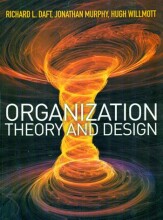Problem Recognition and Information Search - Internal Search: Searching for Information from Memory
8 important questions on Problem Recognition and Information Search - Internal Search: Searching for Information from Memory
After consumers recognize a problem, they move on to the next stage: internal search. What happens in this stage?
Consumers have limited capacity or ability to process information, so consumers are likely to recall only a small subset of stored information when they engage in internal search. On what factors is the degree of internal search dependent?
Also, time pressure and distractions limit internal search.
Much of the research on the role of internal search in consumer decision-making has focused on what is recalled. What are the four major types of information that is recalled with internal search?
2. Attributes
3. Evaluations
4. Experiences
- Higher grades + faster learning
- Never study anything twice
- 100% sure, 100% understanding
The recall of brands is one of the four major types of information that can be recalled during internal search. Do consumers remember all available brands in a given situation?
Brands try to help consumers recall their brand by increasing stored information through heavy marketing so consumer recognize a brand when they see it.
Studies indicate that consideration sets vary in terms of their size, stability, variety and preference dispersion (the equality of preferences toward brands or products in the set). In what kind of situations are changes in the consideration set noticeable?
Marketing implication:
Marketeers should enhance its products linkage with the occasion or situation familiar to consumers, to increase the chance that the product will be recalled from memory as part of a consideration set.
Brands that are recalled, are more likely to be chosen, but it is not given that recall guarantees a spot in the consideration set. What factors play a role in increasing the probability of consumers' recalling a brand and including it in the evoked set?
2. Brand familiarity
3. Goals and usage situations
4. Brand preference (positive attitudes)
5. Retrieval cues (a strong retrieval cue increases the change of being included in the consideration set)
The recall of evaluations is easier than recall of attributes. Why is that?
With recall of evaluations, some consumers engage in online processing: they actively evaluate a brand as they view an ad for it. Afterwards, the evaluation is more likely to be remembered than the specific information that led to the processing.
Internal search is not objective, as we all have processing biases. What are important ones for marketing?
2. Inhibition: The recall of one attribute inhibiting the recall of another --> associated with limitations in consumers processing capacity
3. Mood: consumers are more likely to recall information that match their mood --> stimulating positive moods can enhance the recall of positive attribute information.
The question on the page originate from the summary of the following study material:
- A unique study and practice tool
- Never study anything twice again
- Get the grades you hope for
- 100% sure, 100% understanding
































